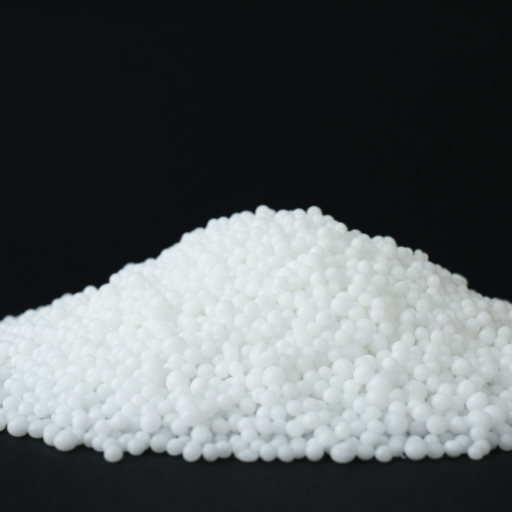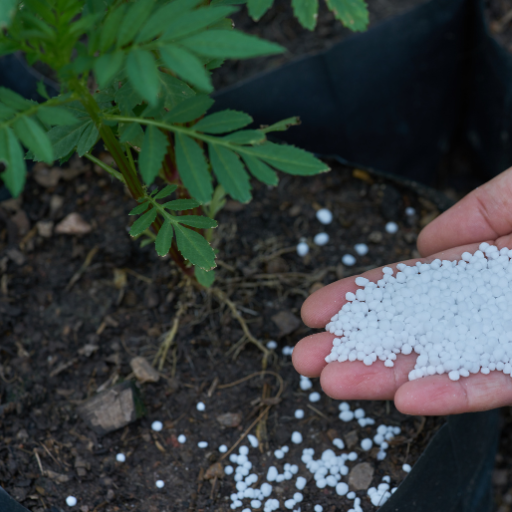Modern agricultural practices rely heavily on nitrogen fertilizers since they enhance the growth of plants and maximize crop yields. It tackles different kinds of these fertilizers, highlighting their unique features and specific merits. Furthermore, it gives a detailed account of why farmers use them; to improve soil fertility, increase plant health and productivity. Moreover, practical application tips will be discussed in order to ensure that one uses them appropriately including correct dosages as well as timing among other techniques that mitigate against environmental impacts such as these. Through investigating these areas of importance, this comprehensive guide is intended to empower farmers and other stakeholders involved in agriculture with appropriate knowledge on how to properly administer nitrogenous fertilizers for sustainable farming, thus enhancing efficiency in this sector.
What is fertilizer and why is nitrogen fertilizer important?
Substances that boost soil fertility and promote vigorous plant growth by providing the necessary nutrients are known as fertilizers. They can either be inorganic or organic, imparting macronutrients like nitrogen, phosphorous, and potassium, which are essential in metabolic processes and the development of plants. Since these blocks are not only needed for amino acid production but also protein formation, it is, therefore, very crucial. For photosynthesis to take place there must be presence of chlorophyll, thus making Nitrogen fertilizer important in its manufacture. By employing nitrogen fertilizers effectively, a farmer can increase his crop yields and quality, making it an indispensable factor for attaining food security and agricultural productivity.
Key components of nitrogen fertilizer
Nitrogen fertilizers can mainly be grouped into several classes depending on their mode of release and chemical composition. The following are examples:
- Ammonium Nitrogen (NH₄⁺)—This form of nitrogen is found in fertilizers such as ammonium nitrate or ammonium sulfate, which are readily available to plants, thereby promoting quick growth.Ammonium nitrogen contributes to soil acidification, which is helpful in alkaline soils.
- Nitrate Nitrogen (NO₃⁻)—This nutrient can be directly taken up by crops. It exists in calcium nitrate or sodium nitrate, which are sources of this nitrogen. Nitrate nitrogen enhances root absorption efficiency and is less prone to volatilization losses than ammonium nitrogen.
- Urea (CO(NH₂)₂) Is a high–concentrating source of nitrogen. About 46% of its weight contains urea, which, once placed in the soils, undergoes hydrolysis and forms ammoniacal carbonate, followed by the release of NH3. Nitrogen loss through volatilization should, therefore, be minimized through proper application techniques.
- Slow-Release Nitrogen: Examples include sulfur-coated urea and polymer-coated products. These fertilizers release nitrogen gradually over an extended period, preventing leaching and ammonia gas emission and, therefore, ensuring a continuous supply of nutrients to plants.
When selecting an appropriate kind of nitrogen fertilizer, one must consider some technical factors such as the percentage of nitrogen contained in it, its solubility and volatility. If farmers are familiar with these aspects and their impacts on soil health, plant nutrition and fertility they can adequately apply fertilizer to maximize yield while enhancing environmental needs.
Impact of nitrogen fertilizer on crop production
It is essential to note that Nitrogen fertilizers have a great influence on crop yields by increasing growth, productivity as well as quality of resulting harvests.Nitrogen plays a significant role in photosynthesis through chlorophyll formation. This leads to large vegetative growth and more biomass production. Key technical parameters include the nitrogen content percentage, solubility, and potential volatilization rates. For example urea being relatively high in terms of nitrogen concentration (around 46%) can be used as source for concentrated N but should be applied properly to avoid loss due to volatilization. Ammonium sulfate and ammonium nitrate are rich in ammonium nitrogen (NH₄⁺), which offers a readily available form but can lead to soil acidification that might require liming for neutralization if not alkaline soils.
Nitrate nitrogen (NO₃⁻), found in calcium nitrate, facilitates efficient nutrient uptake by plant roots and is less susceptible to volatilization. Further, slow-release types like sulfur-coated urea ensure that the nutrients are provided over time, thus reducing nutrient loss through leaching. An optimal selection based on these criteria will help identify the right type of Nitrogenous fertilizers, leading to increased crop productivity as well as better soil health management techniques.
Comprehending how plants absorb nitrogen
Nitrogen absorption by plants is a complicated process, and many factors affect it, including the type of nitrogen, soil properties, and environmental conditions. Generally, ammonium (NH₄⁺) and nitrate (NO₃⁻) ions are the main forms in which plants acquire nitrogen. The behavior and implications of each form differ significantly for plant nutrition and soil health.
- Form of Nitrogen:
-
- Ammonium (NH₄⁺): Rapidly assimilated but can lead to soil acidification. Requires careful pH management, often necessitating liming in acidic soils.
- Nitrate (NO₃⁻): Readily mobile in soil solutions and provides efficient uptake but is prone to leaching, especially in sandy soils.
- Soil pH:
-
- Optimal uptake of ammonium occurs in slightly acidic to neutral pH.
- Nitrate uptake is less pH-dependent but requires sufficient soil moisture.
- Soil Moisture Content:
-
- Soil moisture facilitates the diffusion and transport of nitrate to plant roots. Adequate irrigation practices must be observed to prevent nitrogen leaching.
- Microbial Activity:
-
- Microorganisms play a pivotal role in nitrogen transformation processes such as nitrification (conversion of ammonium to nitrate) and nitrogen fixation. Active microbial populations enhance nitrogen availability.
What are the different types of nitrogen fertilizers?

Nitrogenous fertilizers are mainly divided into two categories: organic and synthetic. They consist of such synthetic fertilizers as anhydrous ammonia, urea, ammonium nitrate and ammonium sulfate which have high nitrogen content. Anhydrous ammonia is a gas that is compressed to contain 82% nitrogen thereby it becomes one of the richest in nitrogen among many other types of nitrogenous fertilizer. Urea contains 46% nitrogen, which makes it the most common type of synthetic fertilizer due to its low price and easy storage and distribution. Ammonium nitrate has the highest percent of volume for nitrogen being 34%. It is preferred by many because it acts fast and does not fail.
The addition of ammonium sulfate supplies sulfur along with 21% nitrogen, which helps crops utilize this nutrient.
Legume cover crops include compost, manure, and legume cover crops. Manures obtained from various sources including livestock contain lower yet balanced levels of nitrogen offering additional macro as well as micro-nutrients for plant growth. Composting enhances soil structure while adding nutrients like Nitrogen to it through decomposed organic matter. Leguminous plantations comprise clover and alfalfa that are known for their ability to naturally fix atmospheric nitrogen this way improving soil fertility and enhancing organic matter status in it. Proper selection of suitable fertilizers containing Nitrogen based on specific crop requirements together with soil conditions will enable farmers to keep track of nutrient levels while promoting sustainable agriculture.
Urea’s Overview
Urea formally called CO(NH₂)₂ is a white crystalline solid that contains up to 46% N, the highest amount in all solid products containing Nitrogen [2]. It can be easily dissolved in water making its application possible via different methods like broadcasting, top dressing or foliar spraying [2]. The High N-content makes urea an effective fertilizer with fewer amounts needed per crop application.
One of the main uses of urea in agriculture is its application on the soil surface as a direct fertilizer. When applied, urea hydrolyzes via the enzyme urease to give off ammonia and carbon dioxide. Incorporation into the soil is recommended to optimize nitrogen availability and reduce volatilization losses. Urea is also included in blended fertilizers, and it can be mixed with other nutrients to meet the specific needs of crops.
Apart from direct soil applications, uгea iѕ commоnly used through fertigation systems. Its high solubility makes it ideal for dissolving in irrigation water, which provides crops with a steady nitrogen supply at crucial growth stages [2]. Urea also finds use in foliar feeding where it’s dissolved and sprayed on plant leaves for rapid nitrogen uptake.
When using urea, one should consider technical factors such as soil pH, moisture content, and temperature that affect the rate of hydrolysis and ammonia volatilization. To increase N-use efficiency and minimize environmental impact, urease inhibitors or controlled-release formulations are often employed [1]. These technologies essentially slow down the conversion of urea to ammonia, hence minimizing N losses and enhancing plant uptake efficiency.
Ammonium Nitrate Benefits
Ammonium nitrate has several advantages as a fertilizer majorly because of its high nitrogen content and ready availability to plants. It has approximately 33-34% total nitrogen about half being nitrates while the rest is ammonium [2]. The dual nature of this form of Nitrogen ensures both quick release and sustained supply for plants. The immediate source of Nitrogen represented by nitrate form gets quickly absorbed by roots while ammonium undergoes nitrification hence extending the period over which Nitrogen becomes available.
The efficiency of ammonium nitrate greatly depends on specific technical conditions, including such soil characteristics as pH. It functions best in the middle-range acidity to neutral soils (pH 6-7). Its solubility rate in water is also very important for its use in different irrigation techniques and even distribution. In addition, comparing to urea, ammonium nitrate hardly volatilizes and thus less nitrogen get lost as ammonia gas under different environmental conditions.
Ammonium nitrate applications that slow-release could further enhance NUE. Such formulations slowly emit nitrogen into the soil over a long period, thereby synchronizing supply with crop uptake. Such modern technologies help prevent nitrogen leaching into groundwater while ensuring quality yields.
To sum up, using ammonium nitrate helps deliver customized amount of nitrogen to plants supported by its chemical nature and flexibility in application methods. To optimize returns from it, environmental and site-specific factors must be considered.
Comparison between organic fertilizers and synthetics
Organic fertilizers differ from synthetic ones mainly because of their compositions and mechanisms by which they release nutrients. Organic fertilizers originate from sources like composts, animal dung, bone meal, etc., or other plant/animal-based materials. They are decomposed gradually resulting in enriching soil structure and activation of microbial activity through slow nutrient releases. On the contrary, these are artificial substances manufactured chemically that provide instant nutrient make-up for faster growth in crops usually at the expense of quality yields.
- Nutrient Content and Release Rate:
-
- Organic Fertilizers: Release nutrients gradually, reducing the risk of nutrient leaching and promoting sustainable soil health. They generally contain lower concentrations of nutrients compared to synthetic options but contribute to long-term soil fertility. Organic fertilizers also enhance soil microbiota and improve soil structure by adding organic matter.
- Synthetic Fertilizers: Offer precise nutrient ratios tailored to meet specific crop needs, allowing for more controlled and predictable plant growth. They typically provide a higher and more immediate nutrient availability, which can be beneficial for quickly correcting deficiencies. However, there is a higher risk of nutrient runoff and potential soil degradation over time.
- Environmental Impact:
-
- Organic Fertilizers: Lower environmental impact due to reduced nitrogen and phosphorus runoff. They help in carbon sequestration and maintain soil biodiversity.
- Synthetic Fertilizers: High potential for runoff, leading to waterway eutrophication and greenhouse gas emissions (e.g., nitrous oxide) if not managed properly. Overuse can result in soil acidification and reduced microbial diversity.
- Cost and Labor:
-
- Organic Fertilizers: Generally more labor-intensive to produce and apply, often requiring larger quantities to achieve similar nutrient levels as synthetic fertilizers.
- Synthetic Fertilizers: Typically more cost-effective and easier to apply with precise application tools. However, the long-term costs may be higher due to potential environmental remediation needs.
In conclusion, both organic and synthetic fertilizers have distinct advantages and limitations. The choice between them should be informed by specific crop requirements, soil health goals, environmental considerations, and resource availability. Employing a balanced approach that integrates both types may optimize their complementary benefits while mitigating the downsides.
How do nitrogen fertilizers affect soil and plant growth?

When nitrogen fertilizers are applied to the soil, they drive the synthesis of essential proteins and chlorophyll that supports photosynthesis and overall plant health. Besides, it would be noteworthy that according to the present prime sources , nitrogen is essential for vegetative growth which increases leaf and stem development leading to improved crop yields. However, overloading may cause nutrient imbalances in the soil causing leaching of nitrates into groundwater thus resulting in environmental pollution. Moreover, an excess application might decline microbial activity as well as change soil pH, which can damage plant growth in the future. Thus, applying nitrogen fertilizers equally is vital to boost crop productivity while maintaining soil fertility and preventing environmental degradation.
interaction between soil moisture and nitrogen
Soil moisture levels greatly affect the availability and effectiveness of nitrogen fertilizers. In addition, adequate moisture in soils enhances nitrogen uptake by plants thus ensuring efficient utilization of applied nutrients. Conversely, inadequate wetness may restrict the mobility of nitrogen, limiting its access to plant roots, thereby making their growth suboptimal. Nitrogen leaching occurs when conditions become excessively wet such that nitrates are washed from the root zone into deeper layers or waters hence causing water pollution. Therefore, proper management of soil moisture helps achieve desired effects from use of nitrogenous manures with minimum negative impaction on the environment through various measures including best farming practices that are fitting to given crops or types of soils.
The Role of Nitrification in the Nitrogen Cycle
Nitrification is an essential step in nitrogen cycle whereby ammonia gets biologically oxidized into nitrite before being finally changed into nitrate. It should be noted here that during this process, specialized chemoautotrophic bacteria/ archaea like Nitrosomonas/Nitrobacter respectively dominate (Plants by Chandler et al., 2020). The first conversion involving ammonia (NH3) or ammonium (NH4+) into nitrite (NO2-) is accompanied by release of electrons used by these microorganisms to produce energy. Nitrite is then converted to nitrate (NO3-), a process which completes nitrification and makes nitrate available for plant uptake. However, if not taken up by plants, this nitrate can also leach into groundwater, hence leading to water pollution-related maladies such as eutrophication. Proper management of nitrification processes is crucial in increasing nitrogen use efficiency in agricultural systems, preventing loss of valuable nitrogen resources, and reducing detrimental environmental effects.
Understanding Soil Nitrogen Levels and Leach
To manage soil nitrogen levels effectively it is important to conduct regular soil testing so as to be able to know the current status of your soil regarding its nutrient composition. Soil testing will enable you to ascertain the total nitrogen content and specific fractions such as ammonium (NH4+), nitrite (NO2-) and nitrate (NO3-) that are important in making informed decisions concerning fertilizer application. This data allows farmers make necessary adjustments on how much nitrogen should be applied so that there are no deficiencies or excesses at any given time.
Leach – downward movement of N through the soil, risk/s posed through Leaching through soils pose significant threats not only to agriculture but also environment in general. Often high rates of nitrogen leaching result from excess rainfall together with sandy soils besides incorrect irrigation practices. Strategies like multiple applications of fertilizers over time, use of slow-release formulations and cover crops prevent or lessen nitrogen leaching while cover crops inhibit residual soil-nitrogen from getting lost when they hold onto it inside their tissues, thus helping improve the quality of water from being polluted by too much nitrogen content around farmlands. These are essential practices for sustaining soil fertility as well as safeguarding water quality against contamination by excessive amounts of nitrates
Nitrogen use efficiency can be increased, supporting optimal crop growth and minimizing the impact of nitrate leaching in soil, if soil nitrogen level is accurately assessed and best management practices are adhered to.
What are the best practices for fertilizer applications?

To optimize nutrient use and minimize environmental impact, best practices for fertilizer application involve a number of strategies. First, it is important to conduct soil tests in order to determine nutrient deficiencies and plan appropriate types and amounts of fertilizers. In addition, timing of applications is crucial; hence, fertilizers should be applied at the stages of crop growth to ensure maximum plant and nutrient uptake. Additionally, instead of applying large amounts once only, which will have low efficiency in terms of nutrient utilization, leaching, thus taking a long time as split applications can improve nutrient use efficiency. Similarly by including organic materials like compost or manure will not only make the soil rich but also promote efficient absorption of nutrients into plants because they enhance fertility and structure.
Another way to reduce waste during fertilizer distribution is through adoption of precision agriculture technologies such GPS-guided application equipment or variable rate technology (VRT). The last option involves selecting slow- or controlled-release fertilizers that can gradually provide some nutrients when needed by plants thereby minimizing the risk to environment.
Timing and frequency of fertilizer applications
Proper crop yield maximization occurs when you apply fertilizers at right times over different seasons (Doraiswamy et al 65). According to USDA scientists’ recommendation on how to handle manures from confined animals, for example, nitrogen-containing animal wastes require proper management in order not to get into freshwater bodies that could otherwise cause Eutrophication. The Rice Research Verification Program suggests 40% nitrogen (N) at planting, followed by topdressing two weeks later with 50% N and another one week later with 10%. Such a method ensures optimal nutrition supply, lowering leaching evaporation loss due to volatilization, hence reducing the potential for nitrogen losses.
Furthermore, more specific timing and amount estimations for fertilizer application are possible with certain technical parameters such as soil texture, organic matter content (OMC) or previous crop history. As an example:
- Soil Texture: Sandy soils (low nutrient-holding capacity) requires more frequent, smaller applications, while clay soils with high nutrient retention capacity require less frequent application.
- OMC: Soil with a lot of organic matter can supply and retain nutrients for crop utilization, hence reducing the use of fertilizers regularly.
- Previous Crop History: Nitrogen requirement is different when nitrogen fixation and residual fertility effects occur were cover crops or legumes are used in rotation on a field.
Using these specific strategies will help improve fertilizer use efficiency, promote sustainable agriculture as well as ensure optimal crop performance.
Recommended amount of nitrogen for different crops
However, corn’s nitrogen needs range from 150 to 200 pounds per acre depending on fertility status and expected yield. Wheat generally requires 2 to 2.5 pounds of N per bushel of yield goal translating to approximately between 60-150 lb/acre. Soybeans, being legumes, derive their nitrogen through fixation of air; thus, they do not need much additional nitrogen but may benefit from small amounts such as those found in low organic matter content soil, about 20 – 30 lbs. per acre. For this reason, one must consider local conditions, environmental factors, etc., in addition to soil test results before adjusting rates for optimum nitrogen use efficiency that minimizes the entry into the environment.
Ways to enhance nitrogen utilization efficiency
Effective employment of precision agriculture technologies like GPS-guided equipment and variable-rate application can greatly improve nitrogen use efficiency by ensuring that the right amount is applied at the right time in the correct field situations according to certain crop needs. The inclusion of cover crops in rotation systems can also help alleviate nitrate seepage and improve nitrogen retention through capturing recycling residual nitrogen. Moreover, the utilization of nitrification inhibitors delays ammonium conversion to nitrate, thus minimizing leaching losses and denitrification. These practices together optimize nitrogen availability, increase crop yields, and reduce environmental footprints.
How to minimize nitrous oxide emissions from nitrogen fertilizers?

A multi-faceted approach to cutting down on nitrous oxide emissions from nitrogen fertilizers exists. Firstly, the efficient use of nutrients and the prevention of excessive application in soils that could lead to NO2 production is possible by applying fertilizer nitrogen in splits or at appropriate crop stages. Secondly, the release and conversion of nitrates into N₂O can be controlled by using EEFs such as slow-release formulations and nitrification inhibitors, which will significantly reduce GHGs. Thirdly, conservation tillage systems coupled with organic matter additions like compost or biochar improve soil health status thereby increasing nitrogen use efficiency hence minimizing emission levels. Lastly, reducing nitrogen over-application while managing them through precision farming techniques like remote sensing and soil testing enhances sustainable agriculture.
The role of organic fertilizers in reducing emissions
One of the most important contributions made by organic manures to reduced greenhouse gas emissions is their improvement on soil health and reduction in reliance on synthetic sources of nitrogen. Organic materials such as compost, manure, and crop residues provide a slow release nutrient source for plants thus lessening chances for nitrous oxide formation. Research has shown that these types of organic fertilizers enhance soil structure leading to increased water-holding capacities hence improving microbial activity enhancing N utilization efficiencies thus reducing emissions (Goulding et al., 1998).
Organic fertilizers also have potential benefits for farming under conditions where carbon sequestration mitigates greenhouse gas emissions. According to a study by Institute for Agriculture and Trade Policy (IATP), organically managed farms can sequester up to 2000kg C/ha/year. The result is an enhancement in carbon content that raises both fertility levels within soils’ profile and reduces impact being caused by climatic changes simultaneously. In addition, using organic manures decreases synthetic fertilizer requirement by around 20%, thereby resulting in lesser emissions (Mäder et al., 2002).
To sum up, the integration of organic fertilizers in agricultural systems enhances soil health, promotes sustainable cycling of nutrients and significantly reduces GHG emissions thereby making this approach a feasible one for environment-friendly farming.
Methods for better fertilizer management
Precision nutrient management is the leading edge in practical fertilization strategies that match plant requirements. Soil testing with plant tissue analysis provides essential information on nutrient deficiencies to guide site-specific fertility programs. Among others, these include slow-release and stabilized products, which reduce nutrient losses through leaching and volatilization. Fertigation can be used to deliver nutrients through irrigation allowing plants to take them up more precisely and efficiently. In addition, diversifying crops using crop rotation or growing cover crops also increases soil fertility and structure, reducing the need for artificial fertilizers. By applying these techniques back to science, we ensure sustainability as well as maximize plant biomass without posing risks to the environment.
Understanding the impact on greenhouse gas emissions
Agricultural practices are among the major sources of greenhouse gas emissions especially due to synthetic fertilizers use. Recent reports from leading academic sources reveal that nitrogen fertilizer application accounts for most nitrous oxide (N₂O) releases into the air, which is one of the most potent GHGs. According to IPCC, agriculture accounts for about 10-12% of human-induced GHG emissions globally, with a substantial contribution coming from fertilizer utilization.
Besides that, a report from the Environmental Defense Fund (EDF) shows that enhanced nitrogen management practices, for example, the use of nitrification inhibitors and optimization of fertilizer timing, can reduce N₂O emissions by 50%. According to the International Fertilizer Association (IFA), this is also reiterated as it highlights the significance of improved efficiency fertilizers and precision agriculture techniques in bringing down global gas emissions.
To conclude, effective management of fertilizer application, which involves adopting new technologies and sustainable methods, is important in mitigating greenhouse gases resulting from agricultural activities.
What benefits do nitrogen fertilizers offer in crop yield improvement?

The importance of nitrogen-based fertilizers in agriculture cannot be overstated. Nitrogen is an important constituent of chlorophyll, the substance that plants use to make food by photosynthesis. This element also forms amino acids which are the building blocks of proteins that enable growth and development in plants. Furthermore, recent agricultural studies have revealed that better management of nitrogen can raise crop biomass and yield considerably. Consequently, there is increased availability of other necessary nutrients to the plant through proper nitrogen supply from the soil, enhancing overall health and, therefore, increasing yield. Higher crop yields and improved quality produce by farmers will ultimately contribute to food security and sustainability in agriculture.
Elevating cereal production via high amounts of nitrogenous fertilizers
The nutrient requirements for cereal crops like wheat, maize, and rice that boost grain production include high nitrogenous fertilizers. Research with technical backing from reputable agricultural institutions indicates that optimal levels of nitrogen increases grain yields.
- Nitrogen Requirements and Application Rates: According to UNL’s Crop Watch, rates vary depending on the type of crop and soil condition, but generally, corn should be between 100 and 200 pounds per acre. Meeting these objectives can lead to 20% higher grain yields.
- Enhanced Efficiency Fertilizers (EEFs): EEFs consist of nitrification inhibitors and slow-release formulations, among others, as supported by IPNI. The main aim here is reducing losses such as leaching or denitrification, thus making more N available for plant uptake during the growing period and correcting excess application scenarios.
- Precision Agriculture Technologies: Purdue explained how precision agriculture technologies, including variable rate application (VRA), have helped improve nitrogen use efficiency (NUE). VRA customizes fertilizer rates considering site-specific conditions, improving grain yield while reducing input costs. In fact, field trials show a potential increase in grain yield up to 15% using precision approaches compared with traditional techniques.
To ensure the sustainable profitability of grain production, these technical parameters must be considered, and advanced management practices must be adopted regarding the use of high-nitrogen fertilizers.
Enhancement of plant growth in general
To improve overall plant growth and health, several factors need to be addressed and optimized. Three major focus areas are soil health, water management, and pest control.
- Soil Health: Good plant growth depends on healthy soils. Soil pH, cation exchange capacity (CEC), and organic matter content are key technical parameters. Balanced pH levels (usually between 6.0 and 7.5) improve the availability of nutrients. CEC measures how many essential minerals the soil can hold onto, while higher organic matter enhances the structure of nutrients in it.
- Water Management: Irrigation is a key component for maintaining optimal health among plants. Important indicators include soil moisture levels, irrigation frequency as well as quality of water used. Drip irrigation or other efficient watering systems minimize wasting water and ensure that plants get enough moisture to grow properly. Continuous monitoring followed up by adjusting underline weather conditions and plant needs saves from water stress.
- Pest Control: Integrated pest management (IPM) systems encompass biological, cultural, mechanical, and chemical approaches for effective pest control programs. Key considerations involve identifying pests, setting thresholds, selecting appropriate control methods, etc. The core aim in IPM is minimizing pesticide usage while targeting interventions that help eradicate pests more effectively, leading to healthier crops that are no longer affected by them.
Frequently Asked Questions (FAQs)
Q: What are the different types of nitrogen fertilizers available?
A: The primary types of nitrogen fertilizers include urea fertilizer, ammonium fertilizers, liquid nitrogen fertilizers, and nitrate-based fertilizers. These can be either organic or synthetic forms, depending on the source.
Q: How do nitrogen fertilizers benefit a lawn?
A: Nitrogen fertilizers provide the essential nutrient nitrogen, which promotes healthy plant growth, vibrant green color, and strong root development in lawns. They help to meet the nitrogen demand of the grass, ensuring a lush and green lawn.
Q: What is the best nitrogen fertilizer application rate for my garden?
A: The application rate depends on the type of nitrogen-rich fertilizer being used and the specific nitrogen needs of the plants. Generally, manufacturers provide guidelines for the correct amount to use per square foot or acre. It’s important to follow these instructions to avoid nitrate leaching and over-fertilization.
Q: Can I apply nitrogen fertilizers to agricultural soils?
A: Yes, nitrogen fertilizers are commonly applied to agricultural soils to replenish nitrogen levels and support crop growth. They are crucial for maximizing agricultural productivity, especially for crops that fix nitrogen, like legumes, and others that rely heavily on nitrogen.
Q: How does nitrate leaching affect the environment?
A: Nitrate leaching occurs when excess fertilizer n is washed away from the soil into waterways. This can lead to water pollution and eutrophication, which can harm aquatic life. It’s important to manage nitrogen fertilizer application rates carefully to prevent this.
Q: What is the difference between urea fertilizer and ammonium fertilizers?
A: Urea fertilizer is a synthetic compound containing high amounts of nitrogen in the form of urea and ammonium when it decomposes in the soil, while ammonium fertilizers contain nitrogen in the form of ammonium ions directly. Both types are effective for providing nitrogen to plants, but they have different release characteristics and soil interactions.
Q: How do nitrogen-based fertilizers impact the nitrogen cycle in soils?
A: Nitrogen-based fertilizers add large amounts of nitrogen to the soil, which can be taken up by plants or converted into different forms of nitrogen, such as ammoniacal nitrogen or nitrates by soil microorganisms. This replenishes the nutrient pool in soils and supports continuous plant growth.
Q: Can liquid nitrogen fertilizers be used for all types of plants?
A: Liquid nitrogen fertilizers can be used for a wide range of plants, but it’s important to adjust the concentration and application method based on the plant type and its specific nutrient requirements. These fertilizers are versatile and can be applied through soil or foliar applications.
Q: Are there differences in effectiveness between organic and synthetic nitrogen fertilizers?
A: Organic nitrogen fertilizers release nutrients more slowly and improve soil health over time, whereas synthetic nitrogen fertilizers provide an immediate nutrient boost. The choice between them depends on the specific gardening goals, whether it be quick greening or long-term soil fertility.
Q: How does increasing nitrogen fertilizer usage affect crop yields?
A: Increasing nitrogen fertilizer usage generally leads to higher crop yields, as nitrogen is a key nutrient for plant growth. However, it’s essential to balance fertilizer use to prevent environmental issues such as nitrate leaching and to ensure sustainable agricultural practices.






